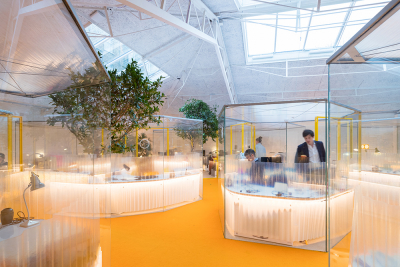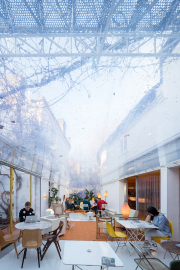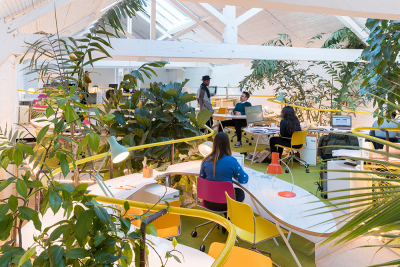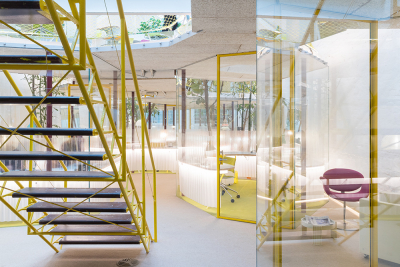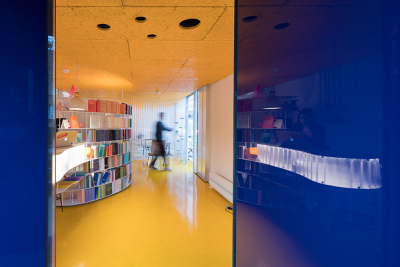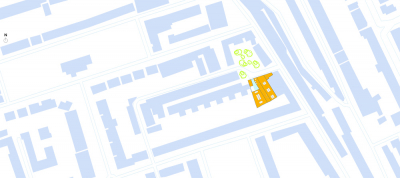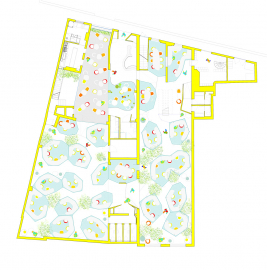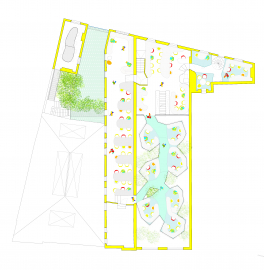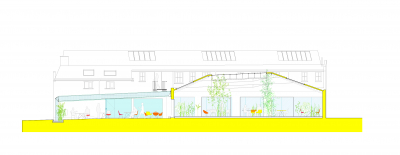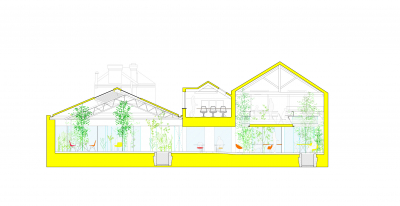Second Home Offices in Holland Park
Filled with natural light, bright colors, and plants, the building is designed to support collaboration, creativity, and job creation.
Everything in this building is about scale.
It is small but with a strong personality, like in a circus; every act is as important as the other, no hierarchies, and only working all together do
they create something unique.
Scale due to the dimensions of the site. It is made up of five existing buildings which all together are only 800 sqm, and all of them different in
periods and shapes.
Scale due to the amount of history in the place. Blow Up, Michelangelo Antonioni’s movie, was filmed here. It was filmed in the studio of Vogue
photographer John Cowan, and the actor David Hemmings was working in the spaces which you can still recognise in the movie. A few years
after that, Richard Rogers had his studio here, his very first personal studio, after winning the competition for the Pompidou Centre.
Stairs, skylights, a bridge and a vine that Richard Rogers himself planted in the courtyard are bits of his design added to the history of the
buildings that we kept as a treasure of modern archaeology.
The rest was easy.
We needed to expand the existing mezzanine and we opened some more skylights to give more natural light to the people and to the 18 real
trees that are now adding more natural history to the place. We also needed to find a way to cover a large part of the courtyard, whilst keeping
the vine alive. We used a clear double layer roof, and to insulate it we worked with environmental engineer Adam Ritchie, filling the gap
between the layers with soap bubbles. It takes 20 minutes to fill and the effect can last a whole day.
Richard Rogers’ vine is still very much alive and covering the whole roof in addition to the bubbles.
Second Home Holland Park continues the exploration into the fields of environmentally sustainable and biophilic design (18 trees have been planted in the space, with some even growing directly out of the floor).
From the street, visitors enter the seemingly modest building complex of whitewashed brick and find themselves in the foyer of the narrow, two-story passageway building which connects two former warehouses. From here, they reach the inner courtyard, which was once open to the sky but has now been topped with a translucent synthetic roof and transformed into a cafeteria.
The building has been carefully restored to accommodate up to 200 workspaces spread over the existing warehouses. Holland park is designed for small teams of up to eight people. They are organized in "working pots" consisting of frameless glass cubes and translucent screening elements.
New roof surfaces have been used to welcome additional natural light. Meanwhile, greenhouse technologies are deployed in an office setting for the first time, with soap bubbles used as environmentally friendly and energy-efficient insulation in the courtyard.
The new bubble roof in the courtyard consists of two layers: a sheet of EFTE plastic has been placed over a layer of PVC glass. It responds to weather in real-time, reducing the need for energy-intensive heating and cooling.

